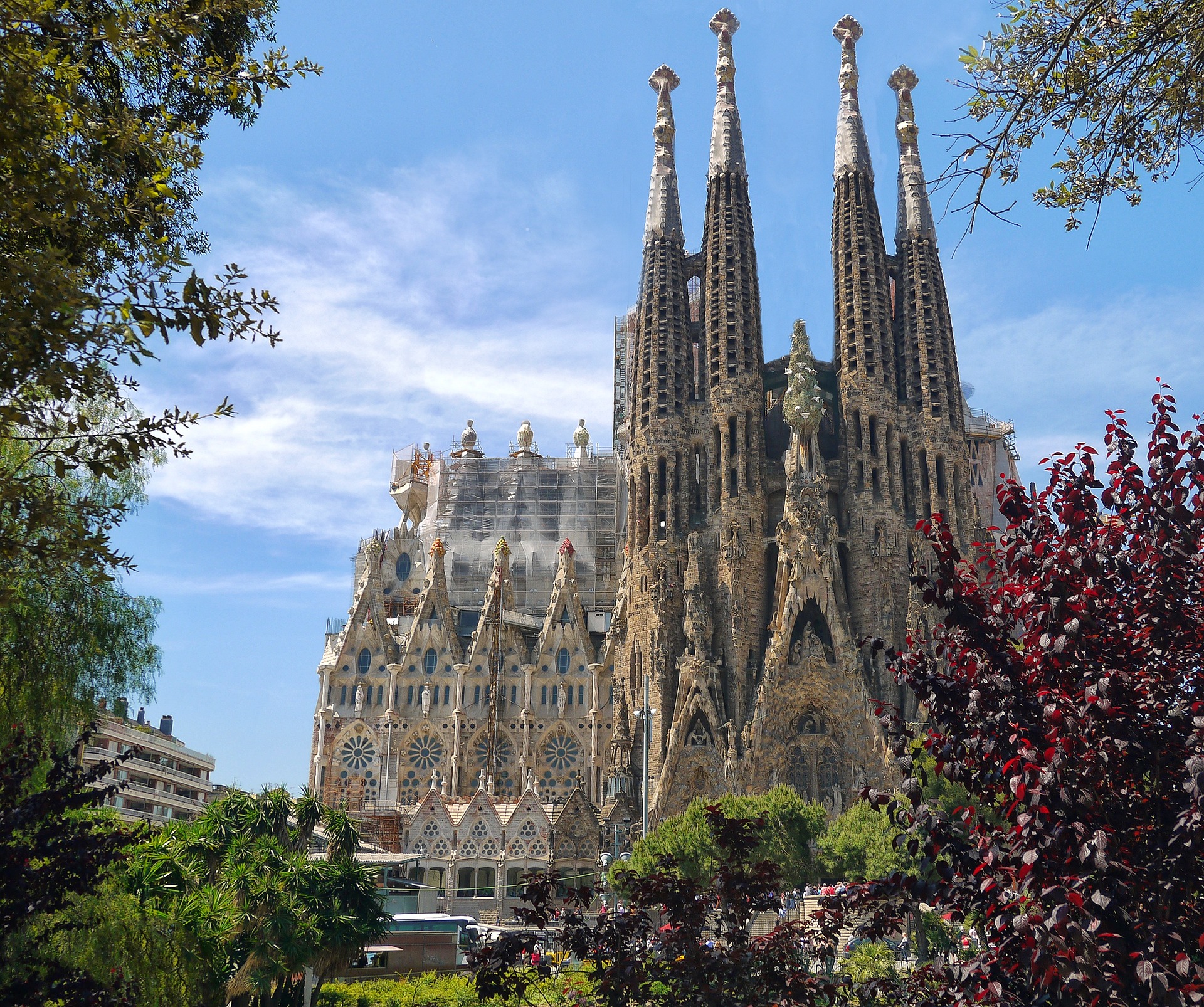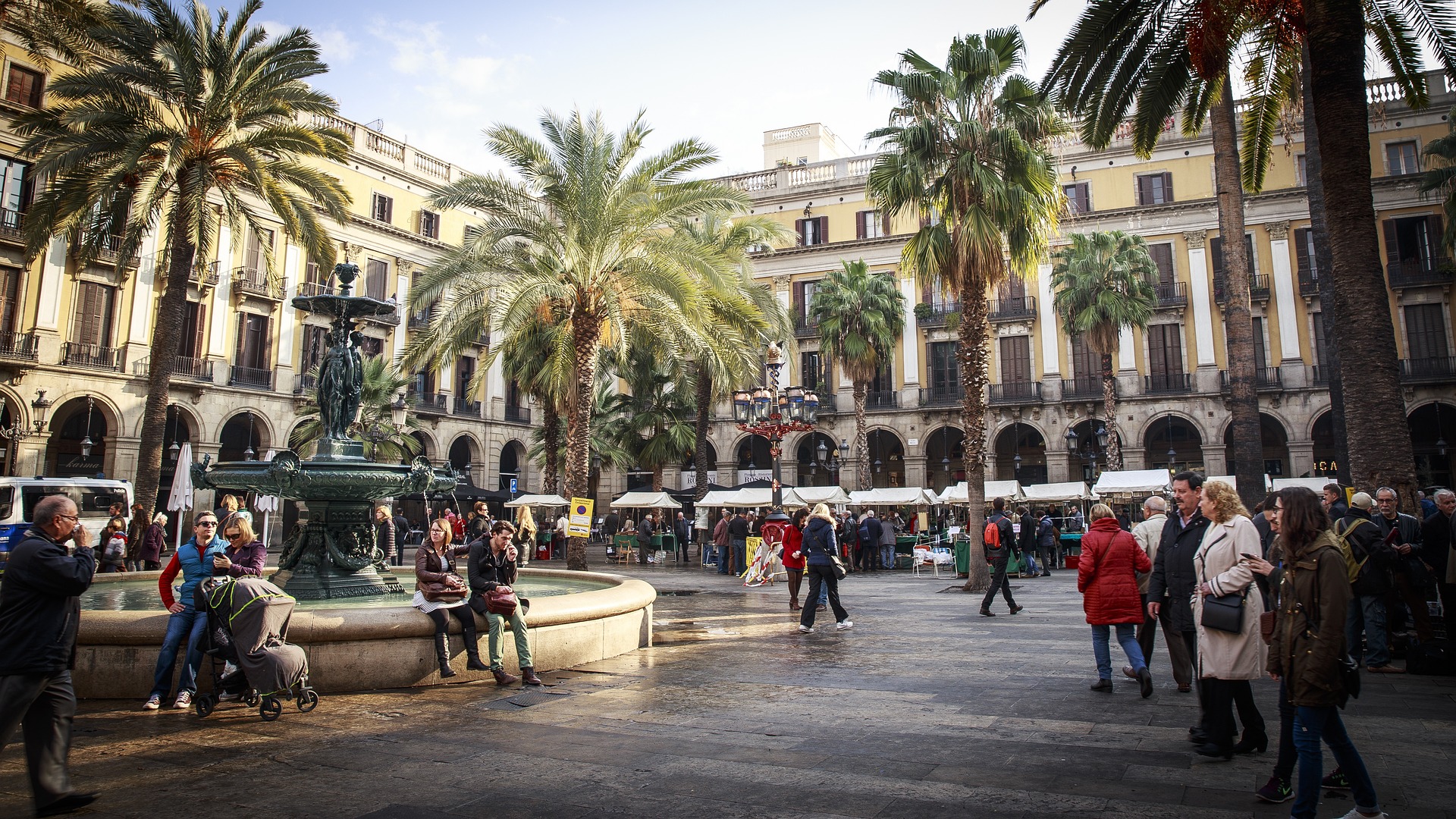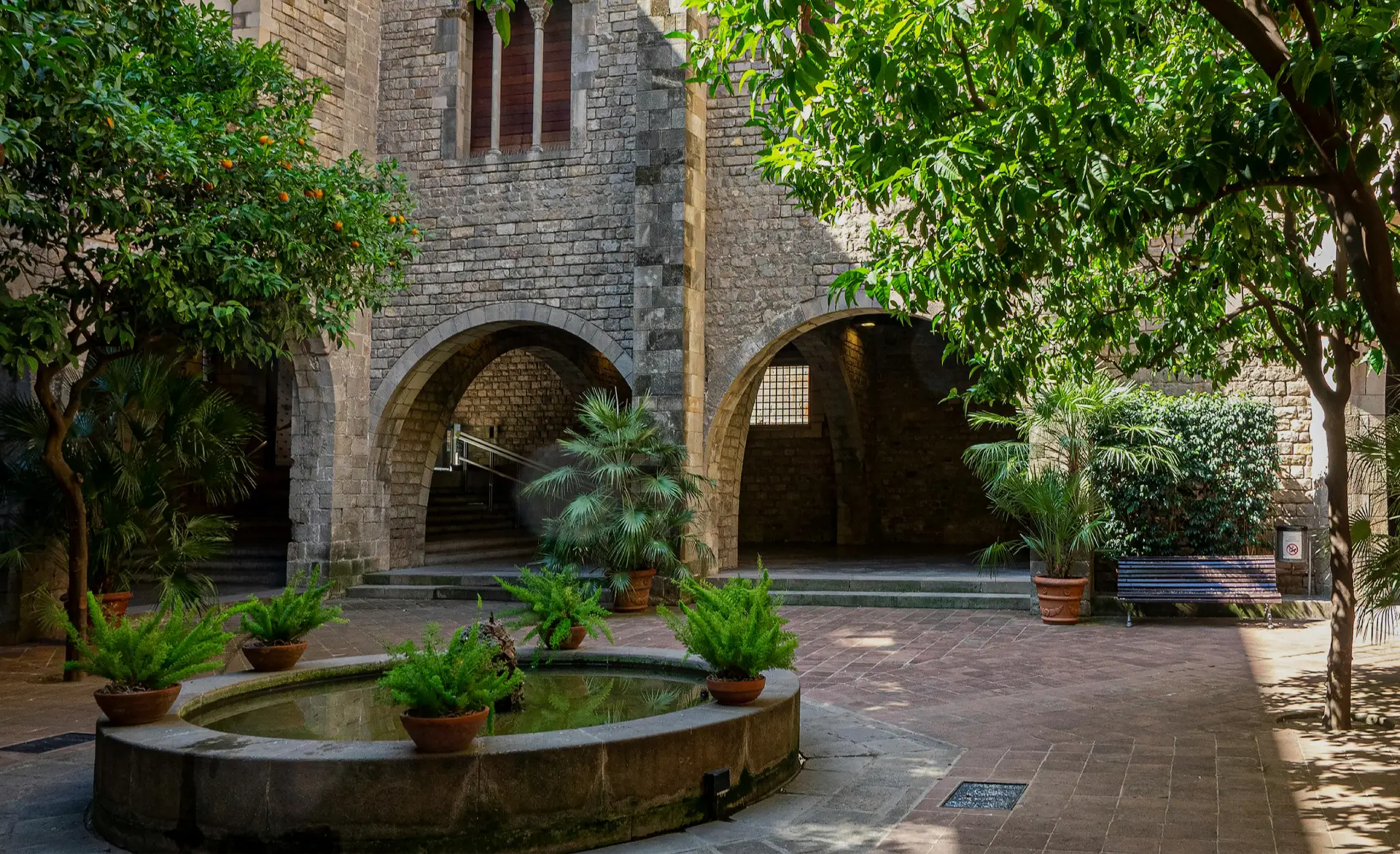
Table of Contents
- 🏰 Origin and beginnings (1866–1882)
- 👷 Gaudí takes over (1883–1926)
- 🗓 Construction Timeline
- 🕊️ 20th Century: Civil War & reconstruction
- 🧱 Design, symbolism & innovations
- 🔔 Recent developments & expected completion
- 🧭 Visitor information
- ✅ Conclusion
🏰 Origin and beginnings (1866–1882)
The project was initiated by Josep Maria Bocabella, inspired during a 1872 visit to the Basilica of Loreto in Italy. He founded the Spiritual Association of Devotees of St. Joseph to fund an “expiatory temple” in Barcelona.
On March 19, 1882, the cornerstone was laid by Bishop Urquinaona, and construction began under architect Francisco de Paula del Villar in a neo-Gothic design.
👷 Gaudí takes over (1883–1926)
In 1883 Villar resigned, and Antoni Gaudí took charge, radically reimagining the design. He introduced organic forms inspired by nature, geometric structures, and symbolic iconography.
Gaudí devoted himself fully by 1914 and remained on the site until his death in 1926, when the basilica was only 15–25% complete.
🗓 Construction Timeline
| Year | Milestone |
|---|---|
| 1866 | Association founded by Josep Maria Bocabella |
| 1881 | Plot purchased (~172 000 pesetas) |
| 1882 | First stone laid (March 19); crypt begins |
| 1883 | Gaudí takes over project |
| 1889 | Crypt and apse completed |
| 1891 | Nativity Façade construction begins |
| 1909 | Workers’ school built by Gaudí |
| 1914 | Gaudí dedicates himself fully to the Basilica |
| 1925 | First tower (St. Barnabas) crowned on Nativity façade |
| 1926 | Gaudí dies (June 10); basilica ~25 % complete |
| 1936 | Spanish Civil War: workshop, models, plans destroyed |
| 1954 | Foundation for Passion Façade laid |
| 1976 | Nativity façade completed |
| 1977 | Passion façade bell towers completed |
| 1984 | Nativity façade & crypt are UNESCO World Heritage |
| 2010 | Consecrated as a minor basilica by Pope Benedict XVI |
| 2016 | Construction begins on towers of Evangelists, Virgin Mary, Jesus |
| 2021 | Virgin Mary’s tower completed (December 8) |
| 2022–2023 | Towers of Evangelists (Luke, Mark, John, Matthew) completed |
| 2024 | Structure of Jesus Tower reaches ~142.5 m; 12 panels installed |
| 2025 | Chapel of the Assumption expected to be completed |
| 2026 | Jesus Tower & cross completion, marking Gaudí centenary |
| 2034–2035 | Decorative details, staircase of Glory Façade, and full basilica completion |
🕊️ 20th Century: Civil War & reconstruction
Construction continued under Domènec Sugrañes until the Spanish Civil War in 1936, when parts of Gaudí’s workshop, models, and plans were destroyed by anarchists.
After 1939, architects like Francesc Quintana, Isidre Puig Boada, and Lluís Bonet i Garí restored the crypt and resumed work on the Passion Façade and towers.
🧱 Design, symbolism & innovations
- Style: a blend of Gothic, Art Nouveau, and Catalan Modernism; columns resemble tree trunks, vaults are hyperboloid surfaces.
- Iconography: 18 towers symbolize the 12 Apostles, 4 Evangelists, Virgin Mary, and Jesus (172.5 m tall).
- Façades: Nativity, Passion, and Glory – each narrates Christ’s life stages.
- Innovative structure: catenary arches, hanging chain maquettes, techniques trialed in the Colònia Güell crypt.
- Schools building: a small school for workers’ children built in 1909 by Gaudí, featuring undulating brickwork.
🔔 Recent developments & expected completion
In 2010, Pope Benedict consecrated it as a minor basilica, and mass has been held in the main nave since.
Construction has been aided by modern digital tools since the 1980s, accelerated by tourism income — nearly 4.7 million visitors per year.
The central Jesus tower should be completed in 2026 (marking 100 years since Gaudí’s death), while decorative elements and the Glory Façade stairway will follow by around 2034.
🧭 Visitor information
Construction is ongoing and the site is a working building site. Visitors are encouraged to book skip-the-line or guided tours to avoid queues.
It regularly hosts religious services such as Sunday and Christmas masses, as well as concerts, with free access during service times.
✅ Conclusion
La Sagrada Família is an extraordinary blend of architectural genius, spiritual symbolism, and contemporary innovation. More than a century after its foundation, it continues to evolve, embodying Gaudí’s idea: “My client is not in a hurry.” Plan your visit – it’s a masterpiece in motion.

